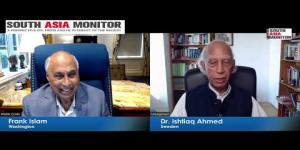Reimagining international education: Australia’s India opportunity
This overbearing numbers-driven outlook has, so far, defined policy on international education. However, if India-Australia relations are to reflect a genuine partnership, the narrative needs to shift from transactional to transformational. This requires that the very purpose behind international education is dramatically rethought and altered.

Jason Clare, Australian education minister, is in India March 1-3 for bilateral discussions with his counterpart to explore how collaboration in the international education space may be further invigorated. His visit would be followed by a series of Australian ministerial visits and that of Prime Minister Anthony Albanese to sign the Comprehensive Economic Cooperation Agreement or FTA. Only a week ago, India's foreign and defence ministers were in Australia for bilateral discussions and in a couple of months, Prime Minister Narendra Modi would visit Australia in connection with the Quad Summit.
Given the extraordinary pace at which the relationship has deepened and intensified, it would be fair to say that it could well emerge as a defining pillar in the Indo-Pacific architecture. In a deeply fragmented global order and prevailing uncertainty, this calls for future-focused strategic thinking, where collective aspirations are achieved through collaborative interventions.
Take international education, for instance, where there is a critical need for a change in approach. This is easier said than done. The past seven decades, for instance, have seen a strong outflow of Indian students wishing to pursue higher education abroad. The majority stayed on, became foreign citizens, and successfully pursued professional careers. Today, several head global companies, hold prominent positions as doctors or lawyers or other professionals, many are elected to parliament, and, in a few countries, even rose to the high office of president or prime minister.
While Australia is a late starter for Indian students seeking to study abroad, it has quickly developed strong brand recall and is, today, a highly sought-after destination. In 2021, Australia is estimated to have earned A$27 billion from the international student vertical. It bears recalling that this was a sharp drop in revenue thanks to the pandemic-related travel restrictions and health protocols. In 2022 and 2023, pent-up demand is estimated to significantly enhance revenue from international education. Consequently, Australian educational providers are strategizing on how they might significantly increase the international student intake.
Narrative needs to change
This overbearing numbers-driven outlook has, so far, defined policy on international education. However, if India-Australia relations are to reflect a genuine partnership, the narrative needs to shift from transactional to transformational. This requires that the very purpose behind international education is dramatically rethought and altered.
It is, in fact, the need of the hour that global efforts pursue global good and see it as a global aspiration. Global challenges, like natural disasters, the pandemic and the spread of disease, climate change, sustainable development, poverty and inequity, cyber security, human rights violations, threats to democratic governance, to name a few, have demonstrated that these can be meaningfully addressed only through collective effort and aspiration. During the pandemic, India’s role as the manufacturing hub for vaccines is a good example, as indeed is the global response to the humanitarian disaster following the recent earthquake in Turkey and Syria.
Now that Australia has firmly positioned itself as a provider of top-quality education with a high employability quotient, it is time to add relationship-building to its storytelling. This requires partnering with government, industry and reputed Indian educational institutions to address the developmental aspirations of its people, such as providing capacity-building programmes to enable the transition from didactic to experiential learning, addressing the public health challenges and shortfall, enhancing capabilities in Artificial Intelligence, robotics and deep learning, creating strong cyber security platforms, partnering on policy interventions and programme implementation on issues, such as climate change, solar electrification and renewables, pollution, water resources, to highlight a few.
This transition from numbers only to a more comprehensive relationship would complement policies enhancing student inflow to Australian universities. In other words, relationship-building and a numbers strategy can coexist. The third stage of transition is to expand the policy to encompass the Indo-Pacific. Indeed, it would be plausible to suggest that international education and research should meaningfully find a place in the Quad dialogue.
(The author, a former Indian diplomat, works in international education. In 2022, he was appointed as Honorary Member to the Order of Australia, Views are personal. He can be reached at berlinbeckons@yahoo.com)
Many to many, many to one, one to one, and again in reverse cycle, one to many, many to many - these multi-tier interactions proferred by Australian universities can catapult students from India to stratospheric partnership (public-private, multispeciality knowledge-research, crosscountry and international), enjoining them to apply knowledge from classroom desk and library to translational research deck. Most happily, Indian students in Optometry and Vision Science are already poised to launch applications in Eye care that have positive impact. The L V Prasad Eye Institute network in India is a leading collaborator with University of New South Wales, Sydney, Australia, with exemplar collaborative research undertakings in basic science research into eye conditions, epidemiological comparitive research into populations in India, Africa, Australia, and elsewhere, and clinical trials into contact lens wear. May we see rapid progress 360⁰ and in all dimensions in people to people interactions. Long live India - Australia progress!














Post a Comment